
At the end of the fifteenth century the Atlantic Ocean was still a dark sea As Al-Idrisi had pointed out four centuries before, teeming with huge monsters. Travelers arriving in Compostela approached Finisterre convinced that nothing existed on the other side. Despite that, it had already been explored by the Portuguese and Spanish throughout that century. The first reaching Cabo de las Tormentas and the second dominating the Canary Islands. But it was missing that someone decided to stop skirting the coasts and face that immense ocean head-on. That crazy visionary was Christopher Columbus, who lived tormented and obsessed with being the first, but he needed someone to push him and that someone, years later, was a woman, Elizabeth I of Castile.
Christopher Columbus was more than just a crazy visionary. In 1485, which is when his relationship with the Catholic Monarchs began, he must have been about 34 years old, and more than half of his life had been spent on board a ship. He had set foot in places as distant as the Castle of San Jorge de la Mina in the Gulf of Guinea, and the island of Iceland. Columbus was a man who traveled with a suitcase loaded with books. In it were present among others; Ptolemy, Pierre d'Ailly an astrologer from the early fifteenth century or Silvio Picolomini one of the most prominent Popes of the Italian Renaissance.
But what he never lacked was a Marco Polo book. Reading it obsessed Christopher Columbus, with the idea that the land-sea relationship on the planet was more balanced than previously thought, and that that fantastic Cipango was closer than everyone said. Toscanelli with his miscalculations was his lifeline, and the one that gave free rein to his determination to cross the Ocean.
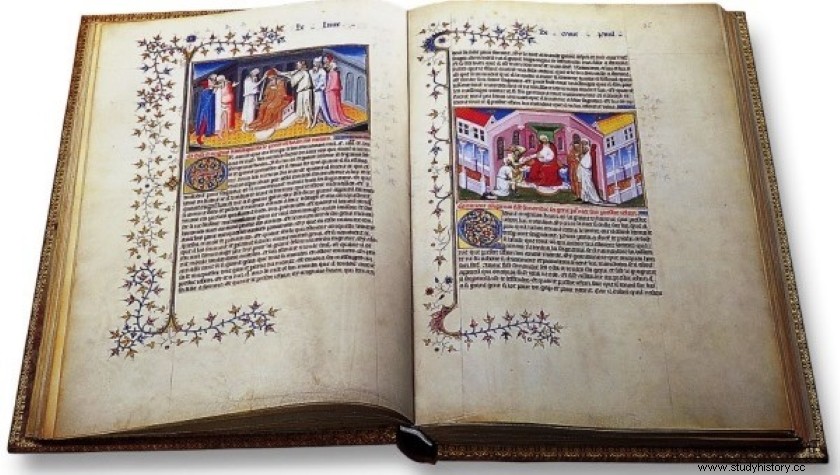
Marco Polo's Book of Wonders
Christopher Columbus arrives at La Rábida.
What he expected on the other side of the Ocean must have dazzled the European crowns. Trade with the East encountered two major obstacles. The first was the deficit balance of payments, yes, Europe paid huge amounts of money to get luxury items or rich oriental spices. On the other hand, the Muslim kingdoms exerted a huge commercial buffer, and since the loss of Acre, the tariffs and the continuous climate of war made commercial relations difficult. As it was discovered shortly after, even the Holy Roman Empire, with outstanding cosmographers such as Martin Behaim or Jerónimo Münzer, were studying similar projects.
As Christopher Columbus is known, he went first to the Portuguese, but at that time they had all their expectations placed on the lucrative slave trade with central Africa, and their hopes were skirt the African continent to reach the East. The resolutions of the Treaty of Alcazobas (1479), left this adventure in Portuguese hands, since the Castilians were prohibited from passing the Canary Islands.
So Columbus decides to expose his ideas to the neighbor. He arrives at the Rábida Monastery in Huelva at the beginning of the year 1485. Columbus arrives there a widower, without money, and surrounded by debts. He is accompanied by a boy who is just over five years old, whom we will know in the future as Diego Colón. Friars such as Antonio Marchena, noblemen such as the Duke of Medinaceli, or politicians such as Alonso de Quintanillas awaited him at the monastery, all ended up pleasantly surprised and infected by the enthusiasm of the Genoese navigator.

Painting representing the arrival of Columbus in La Rábida, by Benito Mercadé
Experts from different fields attended the successive meetings; lawyers, university professors or experienced sailors. Columbus' work was risky, since he had to convince everyone of the real possibility of reaching the other side of the ocean. But despite his enormous convictions, he could not show at any time that it could be simple, and that anyone would venture into it.
With great certainty his geographical errors, Toscanelli's contribution, made a dent. Those men did not take Columbus's calculations for granted, according to which the distance to Cipango was 4,500 km and with islands such as the Azores, Madeira, or the Canary Islands to make a stopover, being able to reach the other side in a month. Fourteen centuries before, Ptolemy had calculated triple, he was right. Therefore, it was normal that those gathered there rejected his offer.
The adventure reaches the ears of Isabel la Católica.
But the friars of La Rábida were dazzled by another aspect that awaited them on the other side of the ocean, the possibility of taking Christianity to the East by a direct sea route. Isabel de Castilla was nicknamed "the Catholic" for a reason that is obvious. Antonio de Marchena, guardian of the convent of La Rábida, writes a letter to his friend Hernando de Talavera, confessor of the Castilian queen.
To make a crude comparison, at the end of the 15th century sailors and adventurers were the literary superheroes of the 21st century. His exploits spread from mouth to mouth among the highest social spheres, there was no library of nobleman or king in which Marco Polo's "Book of the wonders of the world" was missing. Elizabeth who had just had her last daughter, Catherine, who would be queen of England, proposes a first meeting with Columbus. The chosen place was the Archbishop's Palace of Alcalá de Henares. Andrés Bernáldez, chronicler of the Catholic Monarchs, describes the comings and goings of Columbus, displaying his maps on the table with enormous enthusiasm, as well as the contagious illusion on the face of the queen proposing a second meeting.
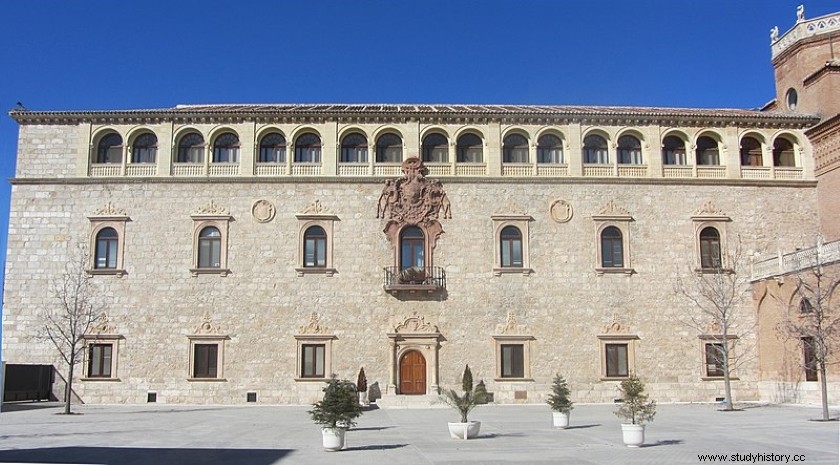
Archbishop's Palace of Alcalá de Henares
This controversial, according to the sources of the time, the second meeting between Isabel and Columbus took place in the convent of San Esteban in Salamanca, in the winter that went from 1486 to 1487. Controversial because it is not reflected in any Castilian source until a century later, said source is the work of Antonio Remesal from the beginning of the 17th century. Professor Manuel Fernández Álvarez takes it for granted, adding that it was the result of oral transmission from the convents. A meeting between Isabel I and Columbus in the premises of a convent was not a trivial event that could be forgotten.
Here there is no record of the presence of Ferdinand of Aragon. Nor is there any record of who gave the order to the servants of the Crown to start sending money to Columbus. 3,000 maravedíes on July 4, 1487, and 4,000 more, in October of the same year. It is evident that someone had been infected, for whatever reason, from that crazy adventure. Ferdinand of Aragon certainly did not go.
Isabel and Columbus trying to convince Ferdinand of Aragon.
We pick up the story two years later. Two years that Columbus must have seemed eternal. The Catholic Monarchs were immersed in the capture of Granada, the last Muslim stronghold after eight centuries of history. Presumably, a staunch Catholic like the queen must have been involved in the conclusion of the reconquest project, and therefore, all the Castilian funds went to this remarkable company.
Columbus heads back to La Rábida, he is not willing to wait any longer, if he does not get the support of the Crown of Castile, he was willing to look for him wherever he went. It must be understood that the support was not only economic, behind the ocean there was a place that would later need enormous resources to be exploited commercially, and without knowing it, politically. A crown was essential for the project.
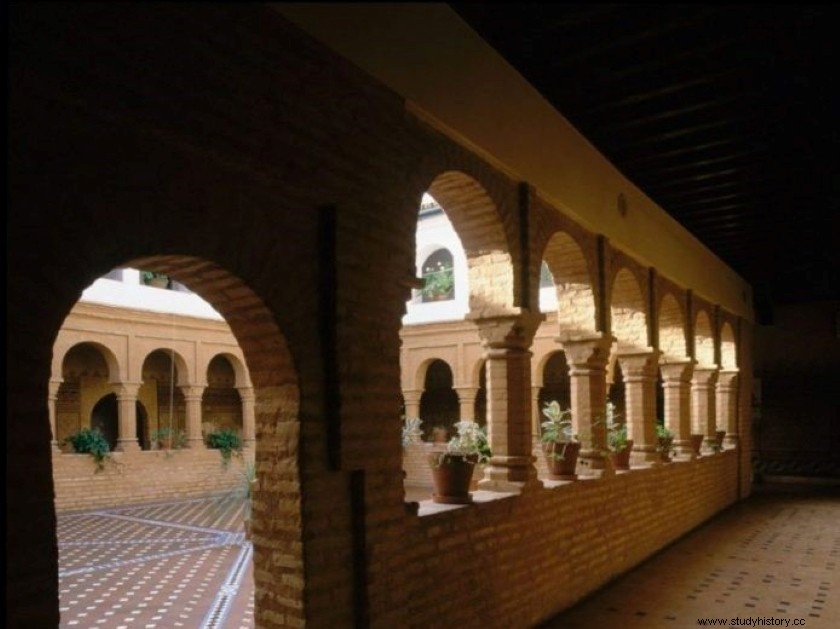
Cloister of Santa María de la Rábida (Huelva)
The friars of the convent were not about to miss the opportunity, holding the Genoese sailor with promises of support until the end. Antonio Marchena takes out his pen again and writes again to the queen. At the same time, a delegation led by the friar Juan Pérez went to Santa Fe, a few kilometers from the Alhambra in Granada, where the queen accompanied Fernando de Aragón in the conquest of Granada. A few days later, Columbus receives 20,000 more maravedís with two requests:not to move from there and to make new suits to appear before the kings a little more tidy.
Two more years. In December 1491 Granada is about to capitulate. It was time to definitely listen to Columbus. The meeting took place in the quarters of the Santa Fe barracks. Colón came ready to play all his cards, because he knew that he could win. The most important thing was not the money, but the royal promise to make him Admiral if he made it to dry land across the ocean. A distinction that would put him directly on the same level as the high Castilian nobility. Ferdinand of Aragon flies into a rage.
“a simple adventurer cannot have the same position as my uncle, the Admiral of Castile”
Only Isabella I of Castile believed in Christopher Columbus.
The conquest of America only had one crown behind it, that was the Crown of Castile. The dynastic union that would lead to the birth of the Spain we know today was still very far from being united in its purposes.

Luis Santangel
Now a new character will enter the scene, Luis Santangel, despite having always been present, will become decisive in the departure of Columbus' expedition to that unknown America. Take up the story Hernando de Colón, son of Christopher
“Luis Santangel appeared before the queen to tell her that he could not understand that she, always eager to start a business, now gave up one with little economic cost and enormous rents if it was achieved”
The lace came from the religious aspect.
“that so many services to God, and to the church could report”
In addition, Luis Santángel provided him with two important reasons. If that company came to fruition, what would his children have thought of it, and what was worse, what would the history of the Catholic Monarchs say if it fell into the hands of another European crown.
Isabel addressed Fernando, at the same time that she sent for Christopher Columbus who was on his way to Huelva. But nothing made Ferdinand of Aragon change his mind, if he agreed to Columbus leaving for the other side of the ocean, it was because of his determination that he was going to end up at the bottom of the sea. Years later, in 1512, he confessed it to Juan Ponce de León, fearful of venturing to sail north of the Antilles. If that "crazy adventurer" didn't sink into the sea, you have nothing to fear.

Christopher Columbus.
On April 17, 1492, they signed the pact in the well-known Capitulations of Santa Fe. On August 3, the Niña, the Pinta and the Santa María set sail for the Canary Islands. On October 12, 1492, that trip forever changed the history of mankind. This is how Christopher Columbus thanked Isabella the Catholic years later.
“Only the queen, my lady, gave a spirit of intelligence and great effort, and she became heir of all, of all this that I went to take in her real name. Because of everyone's ignorance, she passed on the little she knew by talking about inconveniences and expenses ".
Recommended reading:
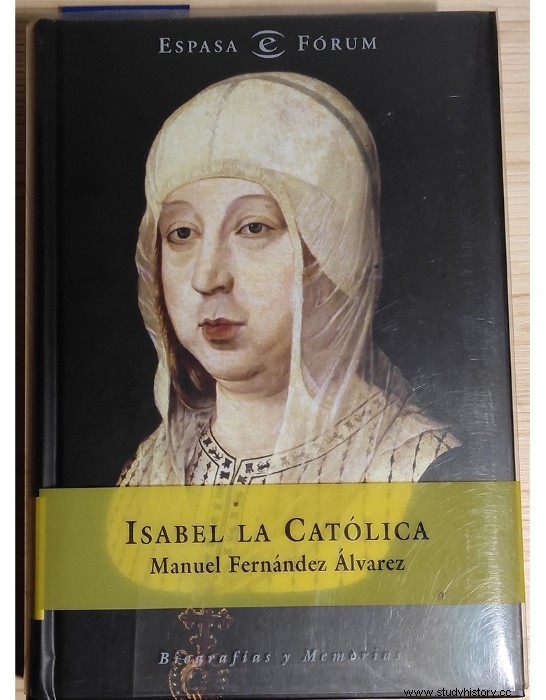
Buy. Isabel the Catholic
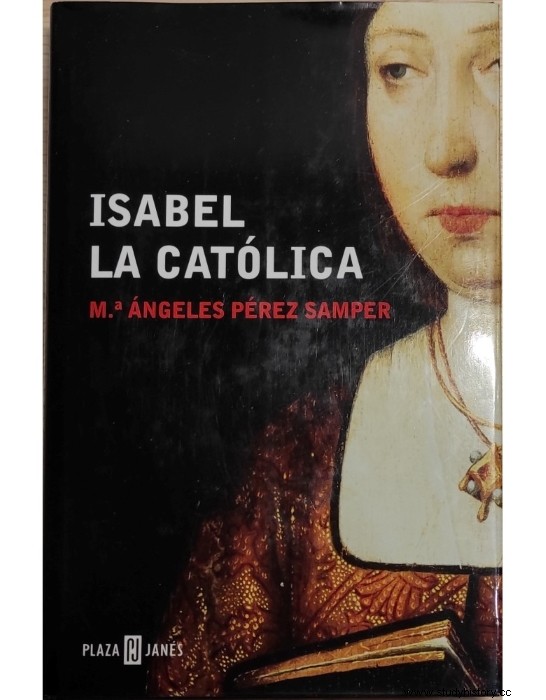
Buy. Isabel the Catholic
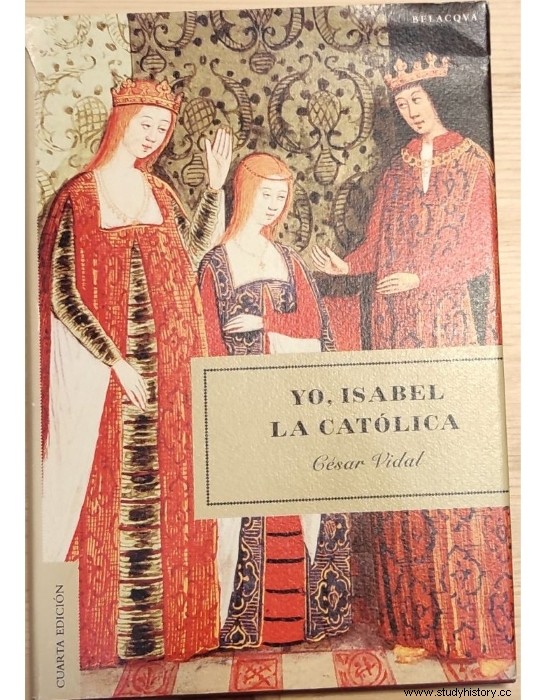
Buy. I, Isabel the Catholic
